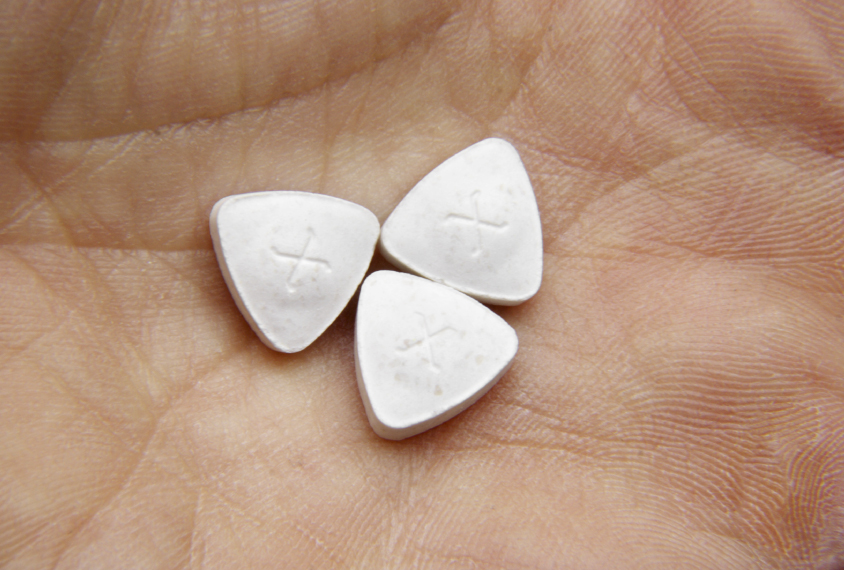
Ecstasy ingredient touted as treatment for anxiety in autism
The active ingredient in the drug popularly known as ecstasy eases social anxiety in people with autism.
Editor’s Note
This article was originally published 16 November 2016, based on preliminary data presented at the 2016 Society for Neuroscience annual meeting in San Diego, California. We have updated the article following publication of the study 8 September 2018 in Psychopharmacology1. Updates appear below in brackets.
The active ingredient in the drug popularly known as ecstasy eases social anxiety in people with autism, and the effects last months after the treatment’s end. Researchers presented the preliminary findings yesterday at the 2016 Society for Neuroscience annual meeting in San Diego.
The researchers caution that recreational ecstasy users are unlikely to see similar benefits, however, because street forms of the drug rarely contain the amounts of the ingredient used in the trial.
MDMA, or 3,4-Methylenedioxymethamphetamine, is a synthetic compound reputed to improve sociability, friendliness and extroversion. People with autism who have taken ecstasy recreationally report improvements in empathy, ease of communication and feeling at ease in their body. This clinical trial is the first rigorous test of these reports.
Researchers randomly assigned eight adults with autism to take a pill containing 75 to 125 milligrams of MDMA, and another four adults to take a placebo. The participants received the treatment during a day-long supervised session with two trained therapists. They got the same treatment and therapy again one month later. [Participants received weekly 60- to 90-minute therapy sessions without MDMA for three weeks following each treatment.]
Prior to the treatment, the participants met with the therapists three times to learn about its possible effects. They also became accustomed to the therapists and to the room specially prepared with soft lighting and minimal noise.
During the treatment session, the participants performed a variety of tasks, including writing in a journal, working with art supplies, listening to music, sitting quietly with their eyes closed and interacting with the therapists.
Exploring ecstasy:
The researchers measured social anxiety before, during and after the treatments, and again six months after the second treatment, using a questionnaire called the Leibowitz Social Anxiety Scale. The study was double-blind, meaning that neither the participants nor the researchers knew whether a participant received the drug or placebo. Researchers from two California-based nonprofit research organizations led the study.
At the end of the trial, the individuals who received MDMA showed much less social anxiety, on average, than those in the placebo group. Social anxiety scores dropped from about 90 to nearly 40 in the MDMA group, compared with nearly 60 in the placebo group. These average group scores remained roughly the same six months later, despite no additional treatment.
The two groups did not show significant differences in any other measures, including quality of life, stress, depression or a test of the ability to tell when another person is lying or being sarcastic. They also did not differ in their changes in blood pressure, heart rate or body temperature during treatment.
None of the participants experienced severe side effects. But those who received MDMA were slightly more likely than controls to report feeling fatigue, anxiety, difficulty concentrating, decreased appetite and other minor side effects during and seven days after the treatment sessions. [And one of the participants who received MDMA reported experiencing a severe headache one day after receiving the treatment.]
It’s unclear how the treatment could lead to lasting changes in social anxiety. MDMA is known to trigger the release of chemical messengers in the brain, including serotonin, norepinephrine and dopamine. It also boosts levels of the hormones oxytocin and vasopressin, both of which are altered in some people with autism and are under investigation as possible autism treatments.
Berra Yazar-Kloniski, a clinical research scientist who presented the findings, says her team has collected blood samples from the participants. She says her team would also like to measure whether the treatment alters blood levels of oxytocin, vasopressin or the stress hormone cortisol. In addition, the team plans a second trial involving a larger number of participants.
For more reports from the 2016 Society for Neuroscience annual meeting, please click here.
References:
- Danforth A.L. et al. Psychopharmacology (Berl) Epub ahead of print (2018) PubMed
Recommended reading

Developmental delay patterns differ with diagnosis; and more

Split gene therapy delivers promise in mice modeling Dravet syndrome

Changes in autism scores across childhood differ between girls and boys
Explore more from The Transmitter

Smell studies often use unnaturally high odor concentrations, analysis reveals

‘Natural Neuroscience: Toward a Systems Neuroscience of Natural Behaviors,’ an excerpt
